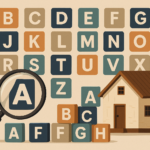
Key takeaways
Australian housing values rose by 0.6% in June, marking a fifth straight month of growth following the -0.3% dip seen between November and January.
Monthly gains were recorded across almost every broad region of Australia.
Capital cities posted stronger monthly growth compared to regional areas for a second consecutive month.
Australian housing values rose by 0.6% in June, marking a fifth straight month of growth following the -0.3% dip seen between November and January.
Monthly gains were recorded across almost every broad region of Australia, with Hobart (-0.2%), the only capital city or rest-of-state region to see a month-on-month fall.
The June quarter saw national home values rise by 1.4%, following a 0.9% lift through the first quarter of the year and a -0.1% decline in Q4 last year.
Except for Regional Tasmania (-0.4%), every capital city and rest-of-state region recorded a rise in values through the quarter.

Falling interest rates have been a clear catalyst behind the renewed momentum.
The first rate cut in February was a clear turning point for housing value trends.
An additional cut in May, and growing certainty of more cuts later in the year have further fuelled positive housing sentiment, pushing values higher.
Although value rises have been broad-based, the pace of growth remains mild compared to mid-2023 when the quarterly rate of growth in national home values peaked at 3.3%, and for that matter, positively tepid relative to the extreme 8.1% quarterly peak growth recorded through the height of the pandemic.
|
|
Change in dwelling values
|
||||
|
|
Month
|
Quarter
|
Annual
|
Total return
|
Median value
|
|
Sydney
|
0.6%
|
1.1%
|
1.3%
|
4.3%
|
$1,210,222
|
|
Melbourne
|
0.5%
|
1.1%
|
-0.4%
|
3.3%
|
$796,952
|
|
Brisbane
|
0.7%
|
2.0%
|
7.0%
|
10.9%
|
$926,243
|
|
Adelaide
|
0.5%
|
1.1%
|
8.0%
|
12.0%
|
$837,176
|
|
Perth
|
0.8%
|
2.1%
|
7.0%
|
11.6%
|
$819,885
|
|
Hobart
|
-0.2%
|
0.9%
|
2.0%
|
6.4%
|
$677,390
|
|
Darwin
|
1.5%
|
4.9%
|
6.0%
|
13.0%
|
$537,471
|
|
Canberra
|
0.9%
|
1.3%
|
0.3%
|
4.3%
|
$855,197
|
|
Combined capitals
|
0.6%
|
1.4%
|
2.7%
|
6.2%
|
$918,408
|
|
Combined regional
|
0.5%
|
1.6%
|
5.5%
|
10.1%
|
$918,408
|
|
National
|
0.6%
|
1.4%
|
3.4%
|
7.1%
|
$837,586
|
Source: Cotality HVI 1st July 2025.
However, the current housing rebound is occurring against a backdrop of relatively low home sales.
Housing turnover through the first half of the year, based on estimates of sales and total dwelling stock, is tracking at an annualised pace of 4.9%, slightly below the decade-average turnover of 5.1%.
From a supply perspective, advertised stock levels are also low, tracking -5.8% below the same time a year ago (based on data for the four weeks ending June 29th) and -16.7% below the previous five-year average.
Although demonstrated demand is tracking slightly below average, advertised supply is scarce, creating a more balanced market for buyers and sellers.
Improved selling conditions can be seen in auction clearance rates, which have risen to slightly above the decade average in the last two weeks of June, holding around the mid 60% range.
Underneath the headline results, the combined capital cities have posted a stronger monthly growth outcome relative to the combined regional areas of Australia for a second consecutive month, following a period of outperformance across regional Australia.
Although the quarterly pace of growth still favours regional Australia, at 1.6%, compared with the combined capitals at 1.4%, it is looking increasingly likely that the quarterly growth trend will once again favour capital city markets over the coming months.

Across the individual capitals, quarterly growth was led by Darwin, with dwelling values jumping 4.9%.
Darwin’s 1.5% rise through June was enough to take dwelling values to a new record high, finally surpassing the mining boom peak recorded just over eleven years ago in May 2014.
Outside of Darwin, the quarterly trend across the capitals was led by Perth (+2.1%) and Brisbane (+2.0%), the same markets which have led the five-year growth trend, with values up 81.1% and 75.1% respectively since June 2020.

At 3.4%, the financial year change in national home values looks to be moving through a low point, but, given the re-acceleration in growth trends over the past five months, is likely to gradually rise through the second half of the year.
Annualising quarterly change implies a national annual growth rate of 5.8%, which is slightly above the decade average annual rate of 5.2%.
Given the upside risk that housing values will accelerate further from here as interest rates reduce, the reality is we will likely see home values rise by more than this over the coming 12 months.
However, despite the prospect for lower interest rates, affordability constraints will likely temper the extent of a housing market upswing.

Outlook
On the upside, we have an expectation that interest rates will fall further over the coming months, possibly reducing to the early 3% or even high 2% range by year’s end.
Consumer sentiment is likely to improve, while labour markets are holding tight.
Additionally, persistently low levels of new housing supply are likely to support values.
With the monthly inflation indicator for May showing a 2.4% core inflation rate (lower than the quarterly CPI trimmed mean of 2.9%), inflation is well and truly back within the RBA’s target range of 2-3%, beating the RBA’s latest forecasts, which had trimmed mean inflation holding at 2.6% from mid-2025.
The lower-than-expected inflation outcome has prompted many economists to bring forward their forecasts for future rate cuts, with a consensus view forming that rates will fall another 25 basis points on July 8th, with more cuts to follow.
Financial markets are pricing in a cash rate of 3.1% by December and 2.9% through the first quarter of 2026.
Lower interest rates go further than improving borrowing capacity and serviceability.
Lower debt servicing costs, along with reduced cost-of-living pressures, should support consumer sentiment and high commitment decision making, working in favour of housing demand.”
The tight labour market, with the unemployment rate holding around 4.1% or lower since early 2022, should also support confidence and borrowing ability.
Concerns about the labour market being ‘too tight’ seem to be fading, with no evidence of a blowout in wage growth.
From a housing supply perspective, the rise in dwelling approvals from the cyclical lows of 2023/24 looks to have been short-lived, with monthly numbers faltering below the decade average and well below the 20,000 approvals required to reach housing accord targets.
Insufficient levels of new housing are likely to place further upward pressure on housing prices at a time when affordability constraints are already at record levels.
Downside risks relate to widespread affordability constraints, elevated levels of household debt, a cautious lending environment and reduced housing demand via population growth.
Geopolitical risk is another factor that could weigh on sentiment.
Given the ongoing affordability constraints evident across most markets, it's hard to see value growth posting a material upswing.
The 2.4% rise in national dwelling values through the first half of the year equates to a dollar value increase in the median dwelling value of approximately $19,000, eroding much of the benefits of lower rates when it comes to borrowing capacity.
Lending policies and regulations are another factor that could keep a lid on housing exuberance.
Since the June quarter of 2023, borrowers with a debt-to-income ratio of six times or higher have comprised around 6% or less of new loan originations.
Any sign of higher housing-related debt levels could be met with a tighter policy framework for home lending.
Household debt levels could weigh on credit availability, with the ratio of household debt to disposable income tracking at 181% in the March quarter.
While down from historic highs, the risk of households accumulating excessive levels of debt as financial conditions ease is something the Council of Financial Regulators has on their radar.
Lower population growth should also help to quell the accrual of housing demand in the absence of a supply response.
Finally, geopolitical risk relating to conflict in the Middle East, US tariffs and the ongoing Ukraine war remains a wild card that could weigh on consumer sentiment and potentially disrupt economic conditions.
Overall, the tailwinds of lower interest rates, higher confidence, tight labour markets and low housing supply are likely to outweigh the headwinds, providing the foundations for further modest growth in housing values in 2025.














